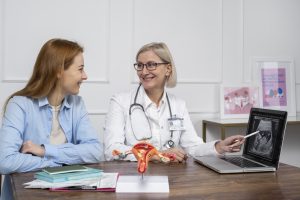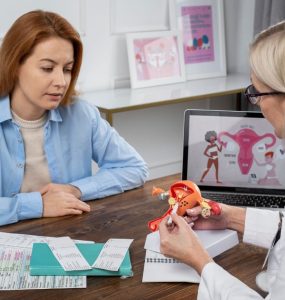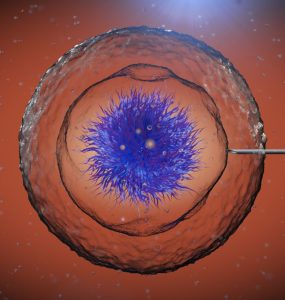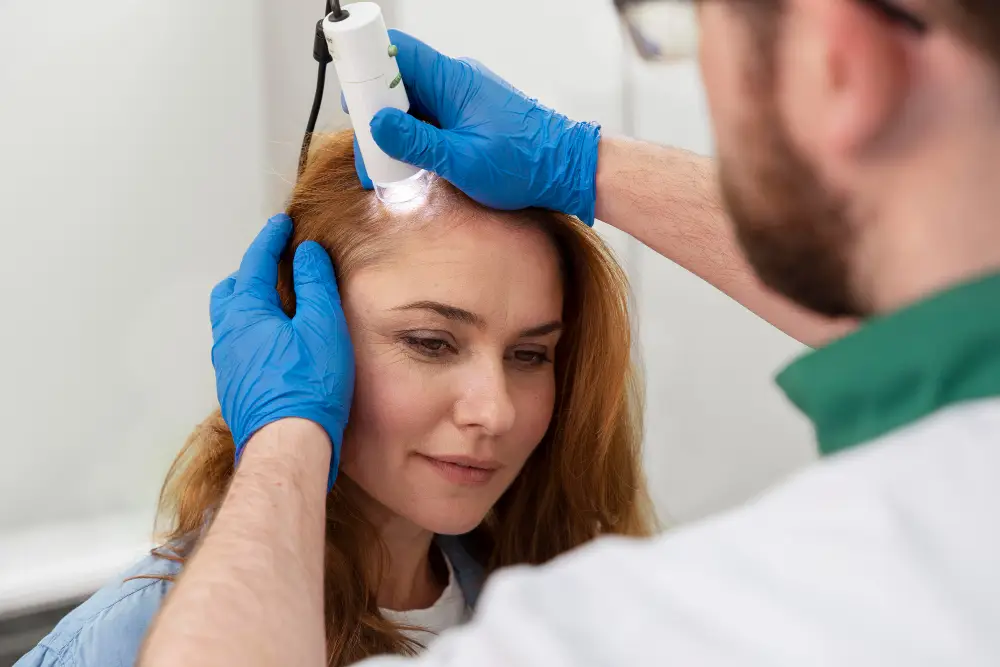
Regenerative Pathways for Female Infertility: A Comprehensive Guide to Understanding Your Options
By the Regencord Team, Pereira, Colombia
Key Takeaways
- Female infertility, often linked to diminished ovarian reserve or oocyte challenges, affects millions globally and can be a profoundly distressing journey.
- Beyond conventional treatments, regenerative medicine offers novel, evolving pathways such as intraovarian PRP and stem cell-based approaches aimed at supporting ovarian function and reproductive health.
- While these are not “cures,” they represent proactive strategies for those seeking alternative or complementary options.
- Colombia, particularly cities like Pereira, provides a unique environment for exploring these advanced treatments, combining modern medical facilities with patient-centric care within a supportive regulatory framework.
- Understanding the science, regulatory landscape, and logistical support available is crucial for making informed decisions on your fertility journey.
Table of Contents
- Introduction: Navigating the Landscape of Female Infertility
- The Stakes & Critical Implications of Female Infertility
- The Conventional Approach to Female Infertility in the USA
- The Pereira, Colombia Advantage: A New Horizon for Regenerative Fertility Care
- The Regencord Fertility Journey Blueprint: Your Path to Clarity
- Our Regenerative Philosophy & Approach: Understanding the Potential
- Overcoming Common Hesitations: Why Seeking Clarity is a Strategic Advantage
- Glossary of Key Terms
- Frequently Asked Questions (FAQ)
- Take the Next Step: Contact Us for a Confidential Case Review
- Disclaimer
Introduction: Navigating the Landscape of Female Infertility
The journey through female infertility is often marked by profound emotional and physical challenges. For many, it’s a path paved with hope, disappointment, and a relentless search for answers. In recent years, advancements in regenerative medicine have opened discussions around innovative approaches, including stem cell treatment for female infertility, ovarian reserve restoration, oocyte activation, and intraovarian PRP, offering a different perspective for those who have exhausted conventional options.
Our goal at Regencord, located in Pereira, Colombia, is to empower you with comprehensive, ethically sound information. We understand the complexities of this evolving field and aim to provide clarity, addressing not just the medical aspects but also the emotional and logistical considerations of your unique journey. This guide is designed to be a foundational resource, helping you understand the landscape of regenerative pathways and how our team can support you in exploring these options.
The Stakes & Critical Implications of Female Infertility

Female infertility is defined by the World Health Organization (WHO) as the inability to achieve a pregnancy after 12 months or more of regular unprotected sexual intercourse. It affects millions of people globally, with estimates suggesting that between 48 million couples and 186 million individuals live with infertility worldwide. The implications extend far beyond the inability to conceive, impacting mental health, relationships, and overall quality of life.
Common contributing factors to female infertility include:
- **Ovulatory Disorders:** Such as Polycystic Ovary Syndrome (PCOS), which accounts for a significant percentage of cases.
- **Tubal Factors:** Blocked or damaged fallopian tubes, often due to pelvic inflammatory disease or endometriosis.
- **Uterine or Cervical Factors:** Issues like fibroids, polyps, or anatomical abnormalities.
- **Diminished Ovarian Reserve (DOR):** A reduction in the number or quality of oocytes, often age-related but can occur prematurely.
- **Endometriosis:** A condition where tissue similar to the lining of the uterus grows outside the uterus.
- **Unexplained Infertility:** Cases where no specific cause can be identified.
The emotional toll is considerable. Studies highlighted by the NIH often discuss the psychological distress, anxiety, depression, and grief experienced by individuals and couples facing infertility. The pursuit of fertility treatments can be an isolating and demanding process, requiring immense resilience. Understanding these stakes underscores the need for comprehensive, compassionate care that acknowledges both the medical and human dimensions of infertility.
The Conventional Approach to Female Infertility in the USA

In countries like the USA, patients typically navigate a structured pathway of conventional fertility treatments overseen by regulatory bodies such as the U.S. Food and Drug Administration (FDA) and professional organizations like the American Society for Reproductive Medicine (ASRM). This approach usually begins with diagnostic testing to identify the cause of infertility, followed by a stepwise treatment plan.
Standard Treatment Modalities:
- **Medication:** Fertility drugs (e.g., Clomiphene Citrate, Gonadotropins) are often used to stimulate ovulation.
- **Intrauterine Insemination (IUI):** Involves placing sperm directly into the uterus during ovulation.
- **In Vitro Fertilization (IVF):** A process where eggs are fertilized by sperm outside the body, and the resulting embryos are then transferred to the uterus. IVF is considered a cornerstone treatment for many forms of infertility and has evolved significantly since its inception, as documented by various PubMed-indexed journals.
- **Surgery:** Procedures to correct uterine abnormalities, remove fibroids or polyps, or address endometriosis.
- **Donor Gametes or Embryos:** For cases where a patient cannot use their own eggs or their partner’s sperm.
- **Gestational Carriers:** For patients unable to carry a pregnancy.
While these conventional treatments have offered hope and success to countless individuals, they are not universally effective. Patients with conditions like severely diminished ovarian reserve, recurrent implantation failure, or advanced reproductive age may find their options limited or experience repeated disappointments. Furthermore, the financial burden in the USA can be substantial, with IVF cycles often costing tens of thousands of dollars and often not fully covered by insurance, as recognized by healthcare discussions and analyses by entities like the CDC.
It’s within this context of both progress and persistent challenges that many individuals begin to explore innovative regenerative pathways as potential alternatives or complementary strategies.
The Pereira, Colombia Advantage: A New Horizon for Regenerative Fertility Care

For those exploring advanced regenerative pathways for female infertility, Colombia, and specifically Pereira, presents a compelling and increasingly recognized destination. The team at Regencord operates within a framework designed to offer patient-centric care that leverages the unique strengths of this region. This is not about claiming unverified clinical superiority but about offering a distinct, high-quality, and accessible patient journey.
Why Pereira Stands Apart:
- Robust Healthcare Infrastructure: Colombia has made significant investments in its healthcare sector, leading to modern hospitals and clinics equipped with advanced technology. INVIMA, the Colombian equivalent of the FDA, plays a crucial role in regulating medical devices, pharmaceuticals, and biological products, ensuring adherence to national health standards. This regulatory oversight contributes to a reputable medical environment.
- Highly Trained Medical Professionals: Colombian medical universities are renowned, producing doctors and specialists who often pursue international training and fellowships. The medical community in Pereira includes professionals who are at the forefront of regenerative medicine research and application, committed to ethical practices and patient safety.
- Patient Journey & Holistic Care Environment: As highlighted by our patients seeking international medical care require more than just a procedure. Pereira offers a naturally tranquil and supportive environment conducive to healing and recovery. The cultural warmth and hospitality of the region are significant factors that can ease the stress of medical travel. Our team focuses on a holistic approach, recognizing that emotional well-being is integral to the overall patient experience.
- Cost-Effectiveness Without Compromising Quality: A significant advantage for many international patients is the comparative affordability of advanced medical treatments in Colombia. This does not imply a compromise on quality but reflects different economic structures. We believe in full transparency regarding treatment costs, which are typically discussed during the confidential case review.
- Accessibility and Support: The journey to receive care abroad can seem daunting. Our patient advocacy team provides comprehensive support, managing everything from initial consultations and travel logistics to accommodation, local transportation, and language assistance. This personalized support system is a cornerstone of the Regencord patient experience, transforming a potentially complex process into a manageable and well-guided pathway, as articulated in our.
- Regulatory Environment for Regenerative Medicine: While the regulatory landscape for regenerative therapies, including stem cells and PRP, is complex and evolving globally, Colombia’s framework allows for the careful exploration of specific regenerative pathways within established ethical guidelines. This provides an opportunity for patients to access treatments that may not be readily available or approved in their home countries (e.g., under the current FDA guidelines in the USA) while still operating under national health authority oversight (Ministry of Health and Social Protection, INVIMA).
The decision to seek care internationally is deeply personal. Our aim is to present the factual advantages and robust support systems available, allowing you to weigh your options with confidence and clarity. The focus is always on education and empowering you to make the most informed choice for your unique fertility journey.
Introducing: The Regencord Fertility Journey Blueprint

Understanding the path forward can transform uncertainty into clarity. We recognize that embarking on a journey towards regenerative fertility care, especially internationally, can feel overwhelming. To demystify this process and empower you with a clear roadmap, we have developed **The Regencord Fertility Journey Blueprint**.
This branded patient resource is designed to guide you through each potential stage, ensuring you feel informed, prepared, and supported. It helps visualize the process, from initial inquiry to post-treatment care.
What the Blueprint Helps You Achieve:
- Clarify Your Needs: Helps you articulate your current situation, concerns, and goals.
- Understand the Process: Provides a step-by-step overview of how a regenerative fertility pathway might unfold, from consultation to potential treatment and follow-up.
- Prepare Logistically: Offers insights into travel, accommodation, and local support, making international care more manageable.
- Ask Informed Questions: Equips you with the knowledge to engage meaningfully with medical teams, ensuring all your concerns are addressed.
- Manage Expectations: Fosters realistic understanding of regenerative medicine’s potential and limitations.
The Regencord Fertility Journey Blueprint is more than just a checklist; it’s a strategic tool developed from our deep experience in patient advocacy, designed to illuminate the path forward and provide reassurance every step of the way. It’s part of our commitment to transparent and comprehensive patient support.
Our Regenerative Philosophy & Approach: Understanding the Potential

At Regencord, our philosophy is rooted in exploring the body’s intrinsic capacity for regeneration and healing, particularly in the context of reproductive health. We focus on ethical, evidence-informed applications of regenerative medicine, understanding that these are evolving fields and not a simple “solution” or “cure” for infertility. Our approach centers on supporting biological function and enhancing the body’s natural processes.
Understanding Regenerative Pathways in Female Infertility:
Regenerative medicine encompasses various strategies aimed at repairing, replacing, or regenerating damaged cells, tissues, or organs. In the context of female infertility, this can involve approaches designed to support:
- Ovarian Reserve Restoration: This concept explores ways to enhance the remaining ovarian function or stimulate dormant follicular activity. Approaches often involve the use of autologous (patient’s own) biological materials. For example, some studies highlighted in PubMed-indexed journals investigate the potential role of Platelet-Rich Plasma (PRP) in modulating the ovarian microenvironment. PRP contains growth factors that may theoretically support cellular health.
- Oocyte Activation: Research into oocyte activation aims to improve the quality or responsiveness of oocytes. This is an area of intense scientific investigation, particularly for patients facing specific challenges with oocyte maturation or fertilization.
- Intraovarian PRP: This involves the injection of Platelet-Rich Plasma (PRP) directly into the ovaries. The rationale, based on preliminary research, is that growth factors and cytokines present in PRP might stimulate ovarian stromal cells, improve blood supply, and potentially support follicular development. ClinicalTrials.gov lists ongoing investigations into PRP applications in reproductive medicine. It’s important to note that while promising, these are still considered innovative approaches and not yet standard practice universally.
- Stem Cell-Based Approaches (Careful Consideration): The use of stem cells for female infertility is a complex and highly researched area. The NIH consistently publishes updates on stem cell research, outlining both the enormous potential and the critical need for further controlled studies. While some clinics worldwide offer unproven stem cell therapies, our approach is to discuss the *current scientific understanding* and focus on *ethically responsible applications* that align with a supportive, not curative, framework. These are primarily considered experimental in many jurisdictions, including the USA, and any discussion is based on their potential to modulate the reproductive environment rather than directly create new eggs.
Our commitment is to transparency. We carefully assess each individual’s case to determine if these regenerative pathways align with their specific needs and the current scientific understanding. We do not assert unverified clinical superiority or guarantee outcomes. Instead, we offer a pathway to explore these options with a team dedicated to your well-being, providing detailed information based on the latest available research from trusted sources like PubMed and the NIH.
Overcoming Common Hesitations: Why Seeking Clarity is a Strategic Advantage
It’s natural to feel a mix of hope and apprehension when considering innovative treatments, especially when they involve international travel. Our team at Regencord understands these concerns. Based on our interactions and insights, we’ve identified common hesitations and aim to address them proactively to help you gain clarity and confidence.
Addressing Your Concerns:
- “Is ‘Stem Cell Treatment for Female Infertility’ a Legitimate Option or Just Hype?”We acknowledge that the field of regenerative medicine can be confusing. Our approach is to be transparent about the *current state of research*, emphasizing the *innovative potential* of pathways like ovarian reserve restoration and intraovarian PRP, while carefully clarifying they are not “cures.” We ground our discussions in *verifiable scientific inquiry* from sources like the NIH and PubMed-indexed journals. We operate within Colombia’s robust regulatory framework, overseen by the Ministry of Health and INVIMA, which allows for specific regenerative applications under strict guidelines, differing from some other countries. Our focus is on patient education, enabling you to distinguish between promising research and unsubstantiated claims, making an informed decision about these evolving pathways.
- “I’ve Failed Other Treatments; Will This Just Be More False Hope?”We deeply understand the emotional and financial toll of prior unsuccessful fertility treatments. Regenerative approaches, such as those focusing on ovarian reserve restoration or oocyte activation, are not presented as a “miracle” or a “guarantee.” Instead, they are *alternative pathways* that address different physiological mechanisms than traditional IVF or other conventional methods. For patients with specific challenges like diminished ovarian reserve who have not found success elsewhere, these treatments offer a distinct biological approach, potentially supporting the body’s natural processes. We offer a *personalized assessment* to determine if these avenues align with your unique circumstances, offering a different kind of hope rooted in scientific exploration and a distinct strategy.
- “Traveling to Colombia for Medical Care Seems Complicated and Potentially Unsafe.”We recognize the anxiety associated with international medical travel. Colombia, and specifically Pereira, has a well-established medical tourism infrastructure. Our dedicated patient advocacy team acts as your single point of contact, streamlining every logistical detail. From travel arrangements, secure accommodation, and local transportation to language support and post-treatment follow-up, we manage the complexities so you don’t have to. You’ll find modern, well-equipped facilities and highly trained medical professionals operating under the oversight of Colombian health authorities like INVIMA, ensuring high standards of care. We transform the perceived complexity into a well-supported, accessible, and reputable experience, prioritizing your safety and peace of mind.
- “Fertility Treatments Are Already So Expensive. Will This Be Another Financial Burden?”The financial strain of fertility journeys is a major concern. We are committed to transparency regarding costs. Treatments in Colombia are often *significantly more cost-effective* than comparable care in countries like the USA, without compromising on the quality of medical services or patient support. We provide clear, detailed financial estimates during your confidential case review, ensuring there are no hidden fees or surprises. Our value proposition is access to innovative regenerative pathways within a high-standard medical environment, coupled with comprehensive patient advocacy, making these treatments a potentially more accessible option for many, reducing the financial anxiety often associated with fertility care.
Seeking clarity through education and direct communication is your most strategic advantage. We invite you to explore these pathways with a team committed to your well-being and informed decision-making.
Glossary of Key Terms
- Female Infertility: The inability of a woman to become pregnant after a certain period (e.g., 12 months) of regular, unprotected intercourse.
- Ovarian Reserve: The number and quality of a woman’s eggs. Diminished ovarian reserve (DOR) indicates a lower quantity or quality.
- Oocyte: An immature egg cell in the ovary which may develop into a mature ovum (egg) after maturation.
- Oocyte Activation: The process initiated by fertilization that triggers the egg to complete meiosis and begin embryonic development.
- Platelet-Rich Plasma (PRP): A concentration of platelets derived from the patient’s own blood, which contains growth factors believed to stimulate tissue repair and regeneration.
- Intraovarian PRP: The specific application of PRP directly into the ovaries, aimed at potentially improving ovarian function.
- Stem Cells: Undifferentiated cells with the capacity to self-renew and differentiate into various specialized cell types. In reproductive medicine, discussions often revolve around mesenchymal stem cells (MSCs) for their immunomodulatory and regenerative properties.
- Regenerative Medicine: A broad field focused on developing new methods to repair, replace, or regenerate damaged cells, tissues, or organs.
- INVIMA: Instituto Nacional de Vigilancia de Medicamentos y Alimentos, Colombia’s National Food and Drug Surveillance Institute, responsible for regulating health products.
- NIH: U.S. National Institutes of Health, a leading biomedical research agency.
- WHO: World Health Organization, the directing and coordinating authority for health within the United Nations system.
Frequently Asked Questions (FAQ)
What is stem cell treatment for female infertility?
Stem cell treatment for female infertility broadly refers to experimental or innovative approaches using various types of stem cells (e.g., mesenchymal stem cells) or other regenerative substances like PRP to potentially improve ovarian function, oocyte quality, or the uterine environment. It’s a field of ongoing research, and specific applications vary, aiming to support the body’s natural regenerative processes.
How does ovarian reserve restoration work?
Ovarian reserve restoration strategies aim to enhance the existing function of the ovaries or potentially stimulate dormant follicles. This often involves the use of autologous biological agents like PRP, rich in growth factors, introduced into the ovarian tissue. The goal is to create a more supportive microenvironment for ovarian cells, which may theoretically lead to improved function. Research in this area is ongoing, as evidenced by studies published in PubMed-indexed journals.
Is intraovarian PRP treatment effective for infertility?
Intraovarian PRP is an innovative regenerative pathway being explored for female infertility, particularly for those with diminished ovarian reserve. Preliminary studies and anecdotal reports have shown promise in some cases, with potential improvements in hormone levels or retrieval of oocytes in patients previously unable to conceive. However, it is not universally recognized as a standard, approved treatment in all countries (e.g., not FDA-approved in the USA), and more robust, large-scale clinical trials are needed to definitively establish its efficacy and optimal protocols, as highlighted by ClinicalTrials.gov.
What are the risks associated with these regenerative treatments?
As with any medical procedure, there are potential risks, which will be thoroughly discussed during a confidential case review. These can include general risks associated with injections (e.g., pain, infection), and for novel regenerative approaches, the long-term effects are still being studied. Our team prioritizes patient safety and transparency, ensuring you are fully informed of all known and potential considerations based on current scientific understanding and the guidelines set by INVIMA and the Colombian Ministry of Health.
Why consider Colombia for regenerative fertility treatments?
Colombia offers a compelling option due to its advanced medical infrastructure, highly trained professionals, and a supportive regulatory environment for certain regenerative therapies. The cost-effectiveness of care, combined with a tranquil recovery environment and comprehensive patient support from teams like Regencord, makes it an attractive destination for many seeking innovative fertility pathways. We focus on providing a holistic, ethical, and transparent patient journey, as detailed in our Pereira, Colombia Advantage section.
How do I know if I’m a candidate for these treatments?
Candidacy for regenerative pathways is determined through a thorough and personalized medical evaluation. This includes reviewing your medical history, previous fertility treatments, diagnostic test results, and specific fertility challenges. The team at Regencord will facilitate a comprehensive case review with medical professionals to assess if these innovative approaches align with your unique situation and potential goals. It’s a collaborative process focused on informed decision-making.
What kind of support can I expect from Regencord during my journey?
The Regencord team provides extensive patient advocacy and logistical support. This includes assistance with travel arrangements, accommodation, airport transfers, local transportation, language interpretation, appointment scheduling, and ongoing communication with the medical team. Our aim is to make your international medical journey as smooth, stress-free, and comfortable as possible, allowing you to focus on your well-being. This comprehensive support is part of The Regencord Fertility Journey Blueprint, which provides a clear roadmap for your experience.
Discover if you are a candidate for the regenerative medicine pathways available through the team at Regencord in Pereira, Colombia.
Your unique fertility journey deserves personalized attention and clarity. Don’t navigate this complex landscape alone.



